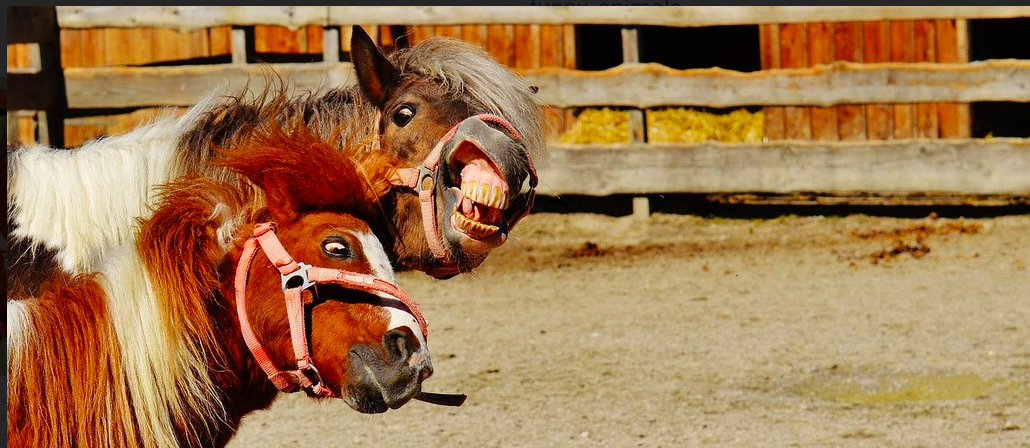Barn Drama Included: Real-Life Lessons in Horse Feed, Hay Sourcing & Unexpected Challenges
Barn Drama Included: Real-Life Lessons in Horse Feed, Hay Sourcing & Unexpected Challenges
By Désirée Braganza, EdD, EBQ
Barn Drama Included is a new feature sharing real-world experiences from equine professionals working with their own horses because even the pros can find themselves in unexpected drama. Read along as we navigate challenges, learn on the fly and figure it out just like everyone else. These are personal accounts, not professional recommendations. Always consult a qualified equine expert before making changes to your horse’s care. Some names and details may be changed to protect the innocent (and occasionally, the guilty).
The Calm Before the Storm
Having recently moved from Northern California to Georgia, I’ve gotten my fair share of friendly cultural ribbing from both coasts. What wasn’t a joke, however, was adapting to the differences in feed. From the grass underfoot to the bagged feed on store shelves, everything was unfamiliar.
Fortunately, I had solid support along the way: Seminole nutritionists Jamie Hodges from Atlanta and Angie Crawford who drove up from Ocala; the farmer where I board; and the local feed store owners who patiently walked me through what’s what. But the toughest adjustment was sourcing my horse’s favorite supplement, alfalfa hay. Georgia’s humidity just doesn’t suit it. Still, with help from my local feed store, I found a type that felt like “home” to him.
In California, our hay often comes with minimal interference: limited fertilizers, pesticides, or drying agents. Some horses are sensitive to these chemicals, others, not so much. My tall, lanky horse has always done best on feed with the lowest possible chemical load. That’s why I prioritized an alfalfa source with three key qualities:
· Grown in New Mexico, where sun-drying is possible - no chemical desiccants needed.
· Produced from non-GMO seed, avoiding crops bred for heavy pesticide use.
· From a farm I could contact directly with questions.
These criteria didn’t come from a checklist. I learned the hard way that what looks good on the outside isn’t always what’s right inside the bale.
You Were Reading for Barn Drama, So Here You Go
One day, I was asked to share this source with someone. Not long after, she called me in a flurry.
“Your feed store is a rip-off,” she said pointedly. “I found greener, cheaper alfalfa delivered straight to my barn.”
When I tried to ask a question, she cut me off with:
“I don’t need a PhD to know what good alfalfa looks like.”
That one hit harder than she realized.
By coincidence, I later crossed paths with the supplier she mentioned. I began asking my usual questions, but he quickly cut in:
“This is the best alfalfa hay you’re going to find. It’s green, steam-baled and sprayed.”
Our conversation ended about as quickly as it started.
Here’s what I took away:
· Steaming before baling can make hay look beautifully green, but may alter its nutritional profile.
· Open pride in using sprays without transparency raises big ole red flags.
· Appearance can be deceiving; “perfect” hay isn’t always best. In humid regions, chemical drying agents are often the norm.
Buying hay isn’t just about price or color. It’s about understanding the source, the process and what your individual horse needs. For me, it’s worth the extra research, phone calls and effort. For someone else with a different horse or set of resources, the right choice might not be the same. Just be sure to read labels, ask questions and don’t assume someone else’s “best” is right for your horse.
Equine Nutrition Resources
If you're looking for expert nutritional guidance, I recommend Equine Balanced Support, a small company with decades of equine nutrition research behind them. What sets them apart is actually what they leave out: no by-product fillers, chemical preservatives, or unnecessary processing. That restraint makes all the difference. They also offer free nutrition consultation.
Seminole Feed has been nourinsing horses since 1934. Their nutrition experts are the ones who visited my horse in-person - that was invaluable. If you would like to reach out to them directly, they offer free nutritional consultations and have multiple ways to contact them when looking for answers: by phone at +1 352-362-4656, through their website or email them directly at Nutritionist@SeminoleFeed.com. Their website is also very user-friendly!
One last note: the prices at my local feed store for New Mexico grown alfalfa aren’t high. In fact, many nearby suppliers charge more. Quality feed doesn’t have to be expensive and expensive feed isn’t always better.
Friendly Reminder: These articles are meant to spark thought, not replace expert guidance. Consult equine professionals for individual advice.
About the Author
Désirée Braganza, EdD, EBQ, received her equine behaviorist qualifications from the Natural Animal Centre, located in South Africa. As a member of Bodhi Horse Practice, she collaborates with equine professionals worldwide on research projects specific to experiences of domesticated horses from an ethological lens. She is a horse partner, a rider, and has cared for and supported numerous horses over the years. Désirée recently relocated from Northern California and is now based in Monroe, Georgia, USA. She consults internationally in person and virtually.
We believe in making ideas freely available, without paywalls. If this article resonates with you and you would like to offer your support so other horses may benefit, feel free to participate in a way that feels true to you.
